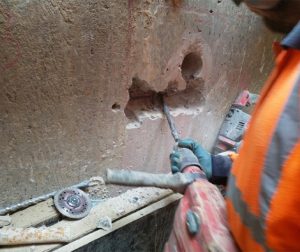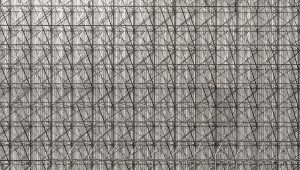What is Structural Steel Inspection?
Structural Steel Inspection is a necessary part of keeping your buildings up to standard. As an integral component of a sound structure; cracks, corrosion, and rusting in your steel put your building at risk of regulatory noncompliance and create potentially dangerous environments.
So it is essential to monitor degradation and fix brewing problems before they become a genuine health and safety concern.
In this article, we answer the question: What is Structural Steel Inspection? As well as discuss the various methods that could be used to develop a rounded view of the condition of your steel, and detail how Streval can help keep your structures safe.
What Does a Structural Steel Inspection Look for?
Steel tests search for damage. This damage could present itself through rusting, cracking, or bending, which seems invisible on the surface but poses a great risk to the integrity of your structure.
It’s important to remember that subsurface steel, regardless of the materials surrounding it, is still susceptible to rusting and deterioration over time.
How is Structural Steel Tested?
Structural steel is tested using various destructive and non-destructive methods. The difference between them is that destructive testing inflicts damage to your steel directly, whereas non-destructive methods usually employ ultrasonic wave tests to assess the steel without touching it.

- Destructive Steel Testing
These methods involve breaking down the steel to determine its mechanical properties, including strength, toughness and hardness. Steel tests of this type are fundamental to understanding how much stress the steel can withstand before breaking.
Destructive Steel Testing is deemed complete when the steel bends or breaks, providing accurate data that confirms whether the steel is suitable for its intended use.
- Non-Destructive Steel Testing
Non-Destructive Steel Testing is done through a variety of methods. Including Magnetic Particle Testing, Ultrasonic Thickness Gauging and Liquid Penetration.
Magnetic Particle Inspections detect cracks, pores, and corrosion on the surface using a magnesiting system, which determines their exact location. The part you intend to test is magnetised with a magnetic flux, and magnetic particles are placed on top of it.
These particles are pulled perpendicular to the direction of the electric current of the system. An accumulation of the magnetic particles indicates subsurface discontinuities and confirms imperfections in the steel.
Ultrasonic Thickness Gauging identifies whether the thickness of your steel has been compromised by corrosion by measuring how long it takes for a sound pulse to travel through it. What this does is determine whether the steel is thick enough to safely fulfil its purpose.
Finally, Liquid penetration involves applying a liquid penetrant to the surface of ferrous and non-ferrous metals and allowing it to seep into any defects in the metal. The excess penetrant will remain on the surface but will be removed before drawing out the subsurface penetrant.
After the excess penetrant is removed, a dry or wet developer is applied to the surface, which draws out the penetrant in the cracks of the steel. As the penetrant is drawn out, it will diffuse into the developer’s coating and form indications of the surface flaws.
Although we don’t offer Liquid Penetration Testing, we can still help with your Structural Steel Inspection.

Enquire About Structural Steel Inspections at Streval
Our team of engineers at Streval work to the highest professional standards to ensure your structural steel is safe for use. We employ both non-destructive and destructive testing methods to achieve the most accurate results and are ready to guide you towards the most effective solution.
Contact us now to learn more about the steel tests we offer and make your building safer.
